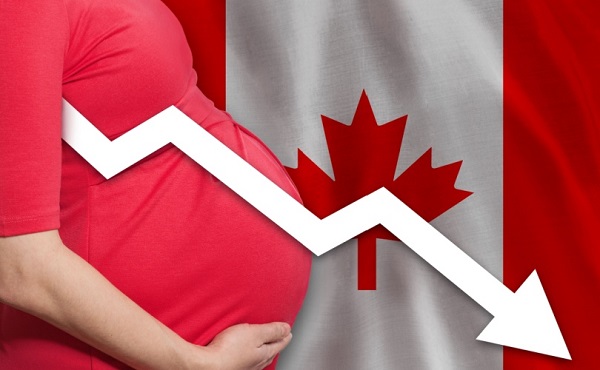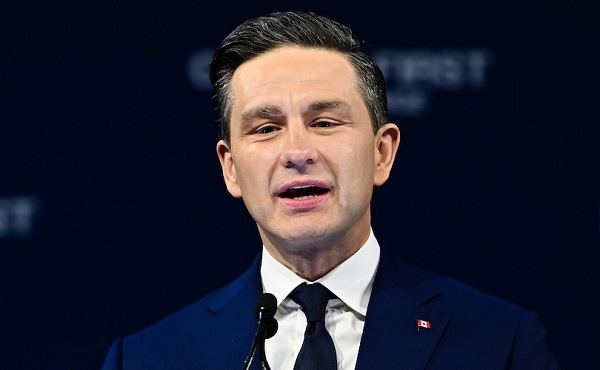Alberta
Garfield Marks; “Oil-by-Seaway” proposal still draws interest.

The proposal to by-pass Quebec in shipping oil to refineries in New Brunswick via Thunder Bay then shipping through the St. Lawrence Seaway still has legs.
Nov 9 2019, Comments by D.B. Chalcroft on the
PROPOSAL TO SHIP OIL TO EASTERN CANADA VIA ST. LAWRENCE SEAWAY by Garfield Marks
Garfield Marks published his “Oil-by-Seaway” and it has subsequently been covered in the CBC media and more recently on CHQR 770 radio.
The Garfield Marks “Oil-by-Seaway” Proposal
Concept – To replace the eastern half (about 2600 km) of the proposed Energy East Pipeline with tanker shipping from Thunder Bay via the Great Lakes and the St. Lawrence Seaway to St. John, New Brunswick.
The Energy East pipeline proposed by TC Energy in 2014, would have converted about 3000 km of the existing natural gas pipeline from Hardisty, Alberta to the Ontario-Quebec border, to diluted bitumen transportation; and would have built 1600 kms of new pipeline from the Ontario-Quebec border to St. John, New Brunswick. The capacity of the pipeline was to have been 1.1 million barrels (200,000 tonnes) of crude oil per day, was estimated to cost $12 billion, and at 4600 km would have been the longest pipeline in North America. TC Energy subsequently cancelled the project in October 2017, citing regulatory rule changes. In addition the Government of Quebec has stated that there is no social license for the Energy East pipeline through Quebec.
“Oil-by-Seaway” Tanker Shipping Option
The “Oil-by-Seaway” proposal would include converting 2000 km of the existing TC Energy Natural Gas pipeline from Hardisty, Ab, to Thunder Bay to carry diluted bitumen, and creating a new oil tanker shipping system from Thunder Bay through the existing St Lawrence Seaway and by ocean to the major Irving oil refinery at St. John , NB.
The existing St. Lawrence Seaway has more available shipping capacity than is presently being utilized. During the 1970s and 1980s, cargo shipments from Thunder Bay, for example, averaged about 20,000,000 metric tonnes per year with between 850 and 1470 vessels per year leaving the port. Since 2009 cargo shipments from Thunder Bay have averaged only about 8,000,000 tonnes/year on some 400 vessels per year.
The existing locks in the St. Lawrence Seaway at the Welland Canal and near Montreal, impose length, width, and draft, size restrictions (maximums of 225.5 m long by 23.8 m wide and draft of 8 m) on the vessels that can use the Great Lakes shipping system. The maximum size of bulk cargo that can be shipped through the system is about 29,000 tonnes per Seaway-capable ship – these ships are known as “lakers”.
The St Lawrence Seaway averages about 275 days of navigation per year – the other 90 days being closed to shipping due to winter conditions.
In order for “Oil-by-Seaway” shipping to deliver the 1,100,000 BPD (200,000 tonnes per day) of oil to the St John, NB terminal as envisaged by Energy East, in a shipping season of 275 days, would require the daily shipping deliveries to be 265,000 tonnes/day during the navigation season. This would require close to 10 “laker-tankers” per day to unload at St. John, NB. Assuming the turn-around time for a “laker-tanker” from Thunder Bay to St. John to Thunder Bay is about 16 days including 2 days for loading and unloading – means that a fleet of about 160 “laker-tankers” would be required to achieve this delivery commitment, plus storage facilities at St John of about 100,000,000 barrels.
The Welland Canal currently has about 1500-1800 vessel transits each way per year, or on average 5-7 transits per day each way. However in 1960 the total number of vessel transits was as high as 4500 each way (an average of 16 /day) although vessels were smaller carrying an average of only 3,400 tonnes of cargo. The Oil-by-Seaway proposal would add 2700 passages per year bringing the total to around 4500 per year or 16 per day each way, very similar to the 1960 record rate albeit with larger average vessel sizes.
Ballpark Cost Estimate for 160 Laker-Tankers
What would it cost to create a fleet of say 160 “Laker-tankers”? As a very rough comparison, the three Newfoundland Off-shore Shuttle Tankers that pickup roughly 230,000 BPD (47,000 tonne/day) of oil production from the five producing platforms on the Grand Banks, cost a reported $375,000,000 (ie $125M/ship)in 2016, and have a deadweight of 148,000 tonnes and gross tonnage of 85,000 tonnes each, meaning each ship can carry up to about 60,000 tonnes of cargo (oil) . These three Shuttle Tankers deliver the 47,000 tonne/day of Grand Bank oil production to the trans-shipment terminal at Whiffen Head, NL with an average turn-around time of 3-5 days . A rough cost estimate for the Laker-Tankers can be obtained by taking $125M X 29,000 t/ 60,000 t = $60 million. Therefore the cost of one “Laker-tanker” with 29,000 tonne capacity is estimated to be in the order of $60 million, and a fleet of 160 Laker-tankers would be in the ballpark of $10 billion.
Discussion
The St. Lawrence Seaway is currently handling 20-25 million tonnes of cargo per year through the Welland Canal in the Downbound direction, ie towards the east, with total transits of 1400 – 1900 per year. Oil-by-Seaway to equal the Energy East proposal of 200,000 tonnes per day would add 73,000,000 tonnes/yr. to the Downbound traffic. This is a significant increase to nearly 100,000,000 tonnes/year and 16 vessel transits per day each way, through the Seaway System. It would appear that the present Seaway infrastructure may be able to accommodate this magnitude of increase without major upgrades, because it doesn’t exceed the historical highs in vessel transits which occurred in the 1960s. This would need to be confirmed with the St. Lawrence Seaway Management Corporation.
The Oil-by-Seaway proposal would require a fleet of 160 or so “Laker-Tankers” which most likely don’t currently exist, and which would cost in the order of $10 billion . This concept would also require the creation of about 100,000,000 bbl. of incremental oil storage capacity at St. John, NB, that probably wasn’t part of the Energy East proposal, to cover the 90 days each year when the Seaway is closed.
Utilizing the existing Seaway Infrastructure to transport oil by tanker would reverse a long trend of declining commodity traffic through the Seaway system. This scheme could create the impetus to update and modernize Seaway facilities, and could also reinvigorate the communities along the Seaway, with substantially more economic activity in their midst.
Fabricating 160 Laker-Tankers could provide a significant workload for Canada’s ship-building industry, perhaps including the Davie Shipyard in Quebec, and the Irving shipyard in Halifax.
There are undoubtedly many other technical, social, environmental, and regulatory issues to be identified and considered, as well as whether this concept is commercially viable.
Preliminary Conclusion
On the surface, the Garfield Marks “Oil-by-Seaway” proposal seems to have sufficient merit to warrant a more thorough analysis than presented herein.
Comments by: David B. Chalcroft, P. Eng.
Previously published;
We have not been able to run our bitumen through a pipeline to a refinery in New Brunswick. There has been resistance in parts of Ontario and in Quebec. What if we came up with another plan. Would we consider it? There will be road blocks, but not insurmountable, would we consider it?
Yes how about Thunder Bay?
Thunder Bay, Ontario, the largest Canadian port of the St. Lawrence Seaway located on the west end of Lake Superior, 1850 kms. from Hardisty, Alberta. A forgotten jewel.
So what, you may ask.
They used to ship grain from Thunder Bay in huge tankers to ports all over the world. Why not oil?
The Saint Lawrence Seaway ships fuel, gasoline and diesel tankers, to this day.
We could run oil tankers to the Irving refinery in New Brunswick, bypassing the controversial pipeline running through eastern Ontario and Quebec.
The pipeline, if that was the transport model chosen, would only need to run through parts of Alberta, Saskatchewan, Manitoba and Ontario. Like, previously stated the pipeline would only be 1850 kms. long.
The other great thing about Thunder Bay is the abundance of rail lines. Transportation for such things as grain and forestry products from western Canada. If you can’t run pipeline from Hardisty, through to Thunder Bay, use the railroad.
Why Hardisty, you may ask.
Hardisty, according to Wikipedia, is mainly known as a pivotal petroleum industry hub where petroleum products such as Western Canada Select blended crude oil and Hardisty heavy oil are produced, stored and traded.
The Town of Hardisty owes its very existence to the Canadian Pacific Railway. About 1904 the surveyors began to survey the railroad from the east and decided to locate a divisional point at Hardisty because of the good water supply from the river.
Hardisty, Alberta has the railroad and has the product, the storage capacity, and the former Alberta government planned on investing $3.7 billion in rail cars for hauling oil while Thunder Bay has the railroad and an under utilised port at the head of the St. Lawrence Seaway.
Economics are there along with opportunity, employment would be created and the east coast could end its’ dependency on imported oil.
Do we have the vision or willingness to consider another option. I am just asking for all avenues to be considered.
In my interviews in Ontario there is a willingness to discuss this idea.
The St. Lawrence Seaway Management Corporation is still reviewing the idea of shipping crude oil from western Canada through its system, and it’s a long way from happening, according to Bruce Hodgson, the Seaway’s director of market development.
“Obviously, there needs to be an ongoing commitment on the part of a producer, and so that’s going to be required for any project of this nature,” he said.
We could consider it, could we not?
CBC NEWS did a story about this idea on March 7 2019;
A retired oil field worker in Alberta has “floated” a novel solution to Alberta’s oil transportation woes: pipe the bitumen to Thunder Bay, Ont., then ship it up the St. Lawrence Seaway to the Irving oil refinery in New Brunswick.
Marks’ proposal might be more than a pipe dream, according to the director of the Queen’s Institute for Energy and Environmental Policy.
‘I don’t think that it’s a totally nuts idea’
“I don’t think that it’s a totally nuts idea,” Warren Mabee said. “I think that there’s some flaws to it … but this is an idea that could work in certain circumstances and at certain times of year. … It’s not the craziest thing I’ve ever heard.”
The chief executive officer of the Port of Thunder Bay said shipping oil from the port “could easily be done.”
“We ship refined gasoline and diesel up from Sarnia. We’ve done that for many many years,” Tim Heney told CBC. “So it’s not something that’s that far-fetched.”
There are, however, plenty of potential drawbacks to shipping crude through the Seaway, Mabee explained, not least of which is the fact that it isn’t open year-round.
The need to store oil or redirect it during the winter months could be costly, he said.
Potential roadblocks
Another potential pitfall is capacity, he added; there may not be enough of the right-sized tankers available to carry the oil through the Seaway.
Finally, he said, the journey by sea from Lake Superior to the Irving refinery in New Brunswick is a long one, so it might make more sense to transport the product to a closer facility such as the one in Sarnia, Ont.
The St. Lawrence Seaway Management Corporation is still reviewing the idea of shipping crude oil from western Canada through its system, and it’s a long way from happening, according to Bruce Hodgson, the Seaway’s director of market development.
“Obviously, there needs to be an ongoing commitment on the part of a producer, and so that’s going to be required for any project of this nature,” he said.
So far, no producer has come forward seeking to ship crude through Thunder Bay, he said.
Asked about the possible environmental risks of shipping oil on Lake Superior, both Hodgson and Heney said shipping by tanker is relatively safe; Hodgson noted that any tankers carrying the product would have to be double-hulled, and crews are heavily vetted.
Time to rethink pipelines?
There hasn’t been a spill in the Seaway system for more than 20 years he said.
Nonetheless, Mabee said, the potential for an oil spill on the Great Lakes could be a huge issue.
“The St. Lawrence and the Great Lakes have a lot of people living in close proximity, a lot of people who rely on it for drinking water,” he said. “There’s a delicate ecosystem there. I think a lot of people would push back against this proposal simply from that perspective.”

In fact, one of the reasons Mabee appreciates Marks’ proposal, he said, is because it invites people to weigh the pros and cons of different methods of transporting oil.
“If we’re not going to build pipelines, but we’re going to continue to use oil, it means that people are going to be looking at some of these alternative transport options,” he said.
“And if we don’t want oil on those alternative transport options, we need to give the pipelines another thought.
Time to consider all options, I dare say.
Alberta
Jason Kenney’s Separatist Panic Misses the Point
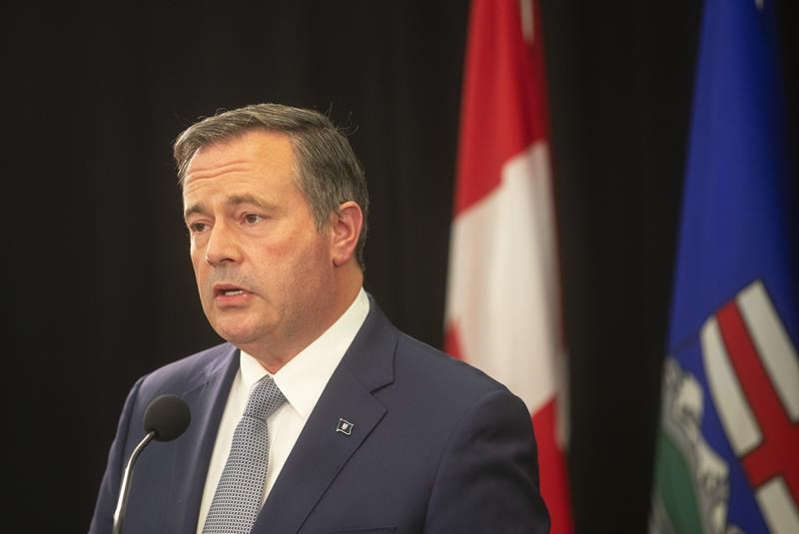
By Collin May
Time was a former political leader’s expected role was to enjoy retirement in relative obscurity, resisting the urge to wade into political debate. Conservatives generally stick to that tradition. Ralph Klein certainly did after his term ended. Stephen Harper has made no attempt to upstage his successors. Yet former Alberta Premier Jason Kenney can’t seem to help himself.
From the boardroom of Bennett Jones, one of Calgary’s oldest law firms, Kenney recently offered his thoughts on the unspeakable horrors that await the province should it entertain a debate (perhaps even call a referendum) on separating from Canada. While dismissing Alberta separatists as a “perennially angry minority”, Kenney nevertheless declared a vote on separation would “would divide families, divide communities, divide friends for no useful purpose.” Business partnerships, church and community groups, even marriages and families would break apart, he warned, “shredding the social fabric of the province.”
It was a remarkable burst of untethered hyperbole, but it says more about the former premier than it does about the province he once led.
Kenney’s take on the history of Alberta separatism is telling. It’s a 50-year-old “discredited concept,” he said, whose acolytes “couldn’t get elected dogcatcher in this province.” Exhibit A in his analysis was Gordon Kesler, an Alberta rodeo rider and oil company scout who believed independence was the only way to save Alberta from Ottawa’s depredations. In a 1982 byelection, Kesler got himself very much elected as an MLA under the Western Canada Concept banner. He later lost in the general election to Peter Lougheed’s Progressive Conservatives, but Lougheed did not belittle Albertans for entertaining separatist notions. Instead, he asked for a mandate to fight Ottawa more effectively — and got it.
Kenney, by contrast, ridicules separatists while simultaneously painting them as an existential menace. Worse, he likens them to followers of Vladimir Putin and (perhaps even worse?) Donald Trump. “[I]f you just follow them on social media,” he claimed, one will quickly see that they cheered on Putin’s attack on Ukraine and Trump’s threat of making Canada the 51 st state.
Kenney’s latest intervention fits a pattern. As premier from 2019 to 2022, he could not resist trying to stamp out dissent. During the pandemic, he alienated political allies by dismissing their concerns about mandatory vaccines with contempt. He saw his ouster as UCP leader as the result of a Trumpian-inspired or “MAGA” campaign. UCP party faithful, however, said their rejection of him had far more to do with his top-down leadership style and habit of “blaming other people for the errors he made.”
What’s especially striking about Kenney’s separatist obsession is that he seems to understand as little about Albertans now as he did while premier. Albertans have long debated separation without the province descending into chaos. When Kesler won his seat, people talked about separation, argued its pros and cons, but couples were not running to their divorce lawyers over the issue and business partners were not at each other’s throats.
And there are legitimate reasons for concern about Canada’s social and political structure, as well as the role provinces play in that structure. Canada’s institutions operate largely on an old colonial model that concentrates power in the original population centre of southern Ontario and Quebec. This has not, and does not, make for great national cohesion or political participation. Instead, it feeds constant fuel to separatist fires.
The current threat to Canadian identity comes as well from the ideological commitments of our federal government. Early in his time as Prime Minister, Justin Trudeau declared Canada to be a “post-national” state. This sort of moniker is consistent with the popularly-designated woke doctrine that eschews the liberal nation-state, democratic procedures and individual freedom in favour of tribalist narratives and identity politics.
The obsession with post-nation-state policies has initiated the dissolution of the Canadian nation regardless of whether Quebeckers or Albertans actually vote for separation. We are all becoming de facto separatists within a dissolving Canada, a drift that current Prime Minister Mark Carney’s ineffective “elbows up” attitude has done nothing to reverse.
Kenney’s panicked musings about Alberta separatists would have us believe the province need only continue the fight for a better deal within the Canadian federation. Kenney pursued just such a policy, and failed signally to deliver. For too many Albertans today, his advice does not reflect the political reality on the ground nor appreciate the worrying trends within Canadian institutions and among our political class.
Kenney likes to associate himself with Edmund Burke, the father of conservatism and defender of venerable institutions. But Burke was known as much in his day for his sympathies with the American revolutionaries and their creation of an experimental new republic as he was for his contempt towards the French Revolution and its Reign of Terror. Burke’s conservatism still linked real actions with true words. It would be advisable, perhaps, to keep our own political language here in Alberta within the bounds of the plausible rather than fly off into the fanciful.
The original, full-length version of this article was recently published in C2C Journal.
Collin May is a lawyer, adjunct lecturer in community health sciences with the Cumming School of Medicine at the University of Calgary, and the author of a number of articles and reviews on the psychology, social theory and philosophy of cancel culture.
Alberta
Alberta Is Where Canadians Go When They Want To Build A Better Life
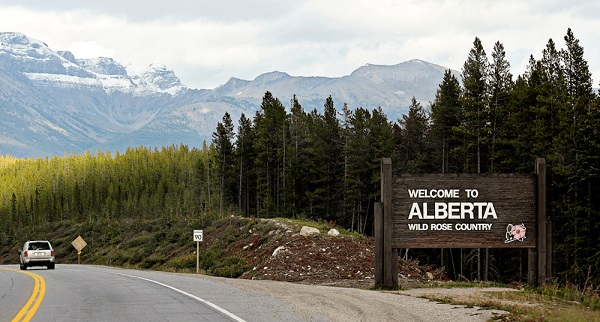
From the Frontier Centre for Public Policy
One in three Canadians chooses Alberta to start over. But to stay Canada’s top destination, it must fight Ottawa’s barriers and complacency
No province has captured the Canadian imagination quite like Alberta—and not because of oil.
One in three Canadians leaving their provinces in the past five years headed to Alberta. They were escaping stagnant wages, high housing costs and suffocating bureaucracy. They came for freedom and opportunity, and Alberta delivered. Its edge is cultural: it rewards enterprise instead of strangling it.
The question now is whether Albertans can keep that edge before Ottawa and complacency close in.
Prosperity, like liberty, vanishes the moment people stop fighting for it. If Alberta wants to remain Canada’s economic engine, it must continue to move forward, tearing down old barriers while fending off the new ones that Ottawa and other provinces are always erecting.
The cost of standing still is staggering.
Economists say provincial trade barriers (rules that prevent goods, services, and workers from moving freely) cost the Canadian economy up to $130 billion a year. For Alberta, even a 10 per cent reduction would be worth $7.3 billion a year.
When Quebec killed the Energy East pipeline that would have carried Alberta crude to eastern refineries, Alberta lost the chance to export oil worth as much as $15 billion annually.
That’s not theory. That’s lost paycheques, lost tax revenue and public services that never materialized.
Alberta has always been more willing than others to break free from the barriers that hold back growth. Liquor sales were privatized decades ago, as were property registries. The New West Partnership with Saskatchewan, Manitoba and B.C. opened labour mobility and procurement, though it has since stalled. Alberta doesn’t impose cultural tests and it doesn’t levy a provincial sales tax. Families arrive because life here is easier. They can work, start a business, raise kids or simply breathe without bureaucrats looking over their shoulder.
But cracks remain. Liquor shelves may be free, but the Alberta Gaming, Liquor and Cannabis Commission monopoly clogs the warehouse. Professional associations in law, teaching and health care are slow to recognize credentials and drown their members in red tape.
Procurement often tilts local, because, apparently, free markets stop at the city line. And like every other province, Alberta still bows to Ottawa’s anticompetition telecom rules, the dairy and poultry cartel and the banking oligopoly, systems that consistently benefit Quebec farmers and Bay Street lenders at Alberta’s expense.
And as if the old cracks weren’t enough, new barriers are appearing. One of the worst is protectionism. Canadians love mocking Donald Trump’s tariffs, yet happily embrace the same thing at home. “Buy local” sounds warm and fuzzy but props up cartels in groceries, banking, telecom and construction. The truth? We’ve imposed more barriers on ourselves than Trump ever dreamed of.
Prime Minister Mark Carney exemplified the problem when he promoted subsidies for canola farmers. It was a double insult. First, it showed Ottawa would rather hand out cash than negotiate hard. Second, it reminded farmers that the “help” isn’t free. They pay for it through their own taxes, scooped from Saskatchewan and Alberta, laundered through federal bureaucracy, then mailed back with a ribbon.
Carney also vowed that interprovincial barriers would vanish by July 1, 2025. That deadline came and went. His shiny new “process” for expediting infrastructure looks like more of the same: more Ottawa mediation that risks slowing everything down.
But it isn’t only economics standing in the way. Ideology is becoming a barrier of its own. Diversity, equity and inclusion has morphed into a system for entrenching gatekeepers. It compels people to think and act in ways they didn’t choose. It drains productivity, creates make-work compliance jobs and sorts people into categories. Worst of all, it punishes anyone who doesn’t conform. Alberta resists this infection better than most, but its universities and federally dependent agencies are already hooked.
Then comes debanking. In 2022, Ottawa showed how quickly it could freeze accounts, and banks complied without hesitation. Since then, regulators have only expanded their reach under the banner of anti–money laundering and climate policy. The message is blunt: if Ottawa decides your sector is undesirable, access to financial services can vanish. For Alberta, with its energy industry branded a planetary threat, this is no hypothetical.
A free economy is meaningless if citizens can be financially exiled from it by decree. Alberta must shield its people by turning ATB, its provincially owned bank, into a fortress institution and enshrining access to financial services as a civil right.
So what does moving forward mean? It means doubling down on being the most desirable province to live and work. That requires bold reforms. Cut regulators down to size. Protect banking access in law. Decentralize big-city governments to make them more accountable and give residents real choices. Reform health care to expand choice and slash wait times. Deregulate housing and trucking to lower costs. Confront public-sector unions that act as ideological monopolies.
Canada loves to brag about free trade, but governs like a feudal kingdom. Alberta has already shown that a freer path is possible. The task now is to resist cartels, fight the banks, tear down old walls and stop new ones from rising.
Alberta has always been a frontier of builders, risk-takers and prosperity seekers, and to thrive it must keep moving. If Alberta leads, it will stay prosperous and desirable. If it falters, doors will close.
The choice is clear: Alberta can either be strangled by regulations or break free and keep its frontier spirit alive.
Marco Navarro-Genie is vice-president of research at the Frontier Centre for Public Policy and co-author, with Barry Cooper, of Canada’s COVID: The Story of a Pandemic Moral Panic (2023).
-

 Opinion2 days ago
Opinion2 days agoJordan Peterson needs prayers as he battles serious health issues, daughter Mikhaila says
-

 COVID-192 days ago
COVID-192 days agoDevastating COVID-19 Vaccine Side Effect Confirmed by New Data: Study
-

 Censorship Industrial Complex2 days ago
Censorship Industrial Complex2 days agoWinnipeg Universities Flunk The Free Speech Test
-
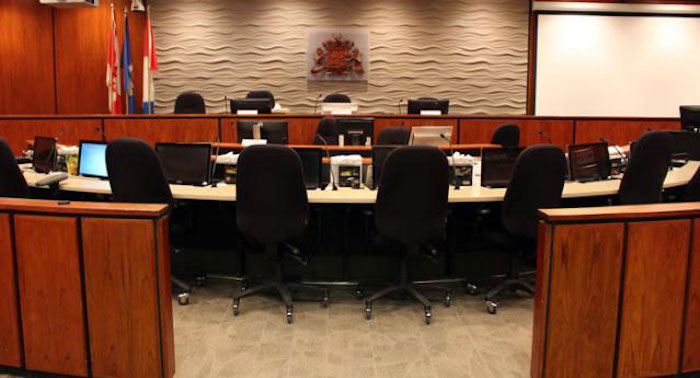
 Red Deer1 day ago
Red Deer1 day agoThe City of Red Deer’s Financial Troubles: Here Are The Candidates I Am Voting For And Why.
-

 Crime2 days ago
Crime2 days agoThe Bureau Exclusive: Chinese–Mexican Syndicate Shipping Methods Exposed — Vancouver as a Global Meth Hub
-

 Crime2 days ago
Crime2 days agoCanadian Sovereignty at Stake: Stunning Testimony at Security Hearing in Ottawa from Sam Cooper
-

 Business1 day ago
Business1 day agoCanada Post is failing Canadians—time to privatize it
-

 Haultain Research2 days ago
Haultain Research2 days agoInclusion and Disorder: Unlearned Lessons from Palestinian Protests



